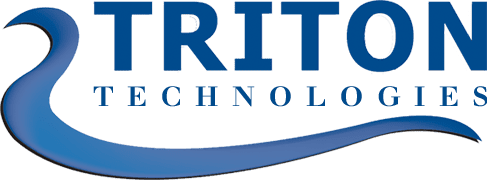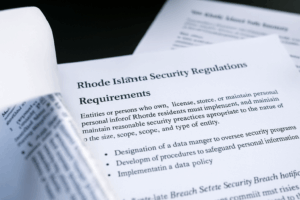Historical Insights and Modern Layered Security
In the 1930s, France built the Maginot Line, an extensive fortification designed to thwart invasions. The strategy was clear: identify potential attack routes, fortify these areas with manpower and defenses, and prevent incursions. This approach, however, failed to account for unforeseen attack methods, leading to its downfall. This historical lesson is surprisingly relevant to today’s IT security. Many businesses rely heavily on antivirus software as their primary defense, similar to the Maginot Line. However, the digital landscape is filled with threats that can bypass antivirus protections. Cybercriminals develop around 100,000 new viruses daily, many rigorously tested against existing antivirus platforms before being unleashed.
Understanding Layered Security: Beyond Antivirus
A robust layered security model requires more than just antivirus solutions. It involves multiple layers of defense, addressing various vulnerabilities. For instance, cyberattacks often exploit weak passwords or trick employees into clicking malicious links, rendering antivirus efforts insufficient. A layered security approach involves prompt detection and response to breaches at the physical, human, network, and mobile layers.
The Importance of Physical Security in a Layered Defense
The physical layer, encompassing all devices within an office, is the easiest to secure but often overlooked. Understanding why physical security is important is crucial, as devices are vulnerable to theft and unauthorized access, leading to significant data breaches. Consider these alarming statistics:
Last year, 60% of businesses in California reported smartphone thefts, and 43% lost tablets containing sensitive data.
High-profile security breaches, such as those involving Chelsea Manning and Edward Snowden, occurred due to access to sensitive information on devices.
An experiment by Comptia revealed that 17% of people used USB devices found in public places on their work or personal computers, posing severe security risks.
Elements of a Layered Security Approach: Focusing on Physical Security
To effectively secure the physical layer within a layered security model, businesses should implement the following elements:
Supervise or Secure Devices
Always monitor or securely store computers and devices to prevent unauthorized access.
Restrict Device Usage: Limit device usage to authorized personnel only, reducing the risk of internal threats.
Avoid Unfamiliar USB Devices
Refrain from using USB devices from unknown sources to prevent malware infections.
Properly Dispose of Old Hard Drives: Ensure old hard drives are thoroughly destroyed before disposal to prevent data recovery.
Explore our Managed Service Offerings
Worcester’s Top Managed Service Provider
What is Layered Security?
Layered security, or a layered defense, involves implementing multiple security measures to protect an organization’s assets. Each layer addresses different types of threats, creating a comprehensive defense strategy. The physical layer is just one part of this model, but understanding the importance of physical security is vital to the overall effectiveness of a layered security approach.
Enhancing Security Through Multiple Layers
Layered security involves integrating multiple defensive mechanisms across various points of potential vulnerability. Here’s a breakdown of the key layers in a layered security model:
Physical Layer
This includes all tangible devices and infrastructure. Physical security measures, such as secure access controls, device tracking, and surveillance, are vital to prevent unauthorized physical access.
Human Layer
Humans are often the weakest link in security. Training employees on security best practices, recognizing phishing attempts, and enforcing strong password policies are critical steps.
Network Layer
Protecting the network involves implementing firewalls, intrusion detection systems (IDS), and encryption to safeguard data as it travels across the network.
Application Layer
Ensuring that applications are secure involves regular updates, patching vulnerabilities, and using application firewalls to prevent exploitation of software flaws.
Data Layer
Data protection involves encryption, access controls, and regular backups to ensure data integrity and availability in case of an attack.
The Role of Physical Security in a Comprehensive Defense Strategy
The importance of physical security within a layered security approach cannot be overstated. Physical security provides the foundation upon which other security measures are built. Without securing the physical layer, other security measures can be easily circumvented. For example, if a cybercriminal gains physical access to a device, they can potentially bypass software-based security controls, access sensitive data, or even introduce malware directly into the system.
Discover our IT Solutions for Your Industry
Worcester’s Top Managed Service Provider
How Triton Technologies Can Help
Triton Technologies is at the forefront of providing innovative solutions that enhance layered security for businesses. With a focus on developing cutting-edge educational tools and resources, Triton Technologies helps organizations seamlessly integrate comprehensive security measures into their operations. Here’s how Triton Technologies can support your layered security strategy:
Comprehensive Learning Platforms
Triton Technologies offers robust online learning platforms that facilitate blended and flipped classroom models. These platforms provide a user-friendly interface for both teachers and students, enabling easy access to a wide range of educational resources.
Adaptive Learning Systems
Triton’s adaptive learning systems use AI to tailor educational content to individual student needs, ensuring personalized learning experiences. These systems analyze student performance and adjust the difficulty and type of content accordingly.
Professional Development
Recognizing the importance of teacher training, Triton Technologies provides comprehensive professional development programs. These programs help educators become proficient in using digital tools and integrating them effectively into their teaching practices.
Collaborative Tools
Triton Technologies offers a suite of tools designed to enhance collaboration among students and teachers. These include digital whiteboards, real-time communication platforms, and project management tools that facilitate group work and interactive learning.
Security and Privacy Solutions
Ensuring the safety and privacy of student data is a top priority. Triton Technologies provides secure platforms that comply with all relevant privacy regulations, giving schools peace of mind when using their digital tools.
Gamification and Engagement
Triton’s gamified learning applications and interactive simulations make learning engaging and enjoyable. These tools help increase student motivation and participation, making educational content more accessible and fun.
A layered security model offers a comprehensive defense strategy against the ever-evolving landscape of cyber threats. By focusing on the importance of physical security and incorporating it into a broader layered defense, businesses can significantly enhance their overall security posture. The physical layer is a fundamental element of layered security, providing the first line of defense against unauthorized access and potential data breaches. With the support of innovative solutions from companies like Triton Technologies, schools and businesses can overcome challenges and fully realize the potential of a layered security approach. In our next installment, Part II, we will explore the human and network layers of security, delving into strategies to protect against social engineering, phishing, and network-based threats. Strengthening these layers, alongside the physical layer, will create a formidable defense against cyber threats.
Discover Our Compliance Management Solutions
Worcester’s Leading Provider of Compliance Services



